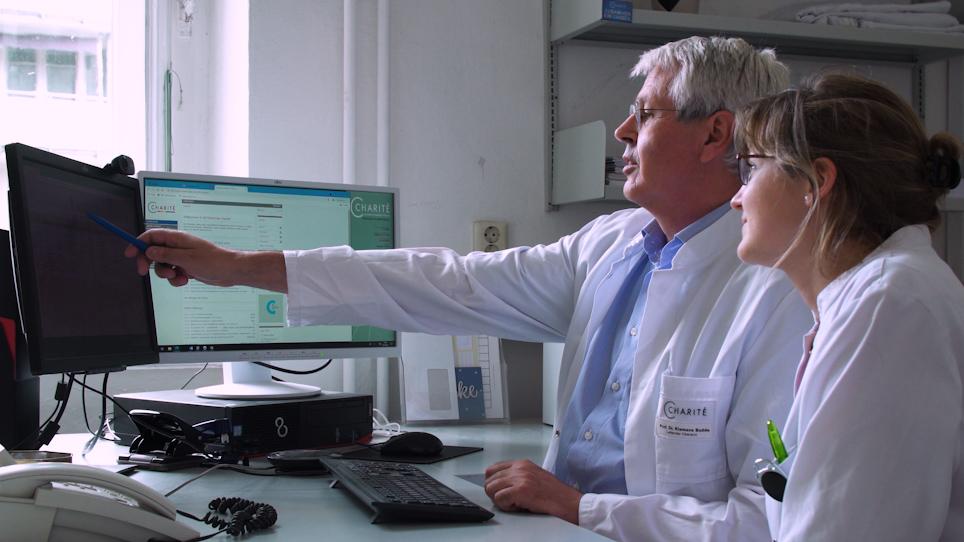Charité - Universitätsmedizin Berlin
19 ARTICLES PUBLISHED IN JoVE
Immunology and Infection
Here we describe the orthotopic rat hind-limb transplantation procedure, which seems to be the gold standard in vivo model for composite tissue allotransplantation research.
Medicine
There is accumulating evidence, that ischemic preconditioning (PC) – a non-damaging ischemic challenge to the brain - confers a transient protection to a subsequent damaging ischemic insult. We established bilateral common carotid artery occlusion (BCCAO) as a preconditioning stimulus to induce early ischemic tolerance (IT) to transient focal cerebral ischemia (induced by middle cerebral artery occlusion, MCAO) in C57Bl6/J mice.
Medicine
Patients with visual deficits after stroke report about different constraints in daily life most likely due to variable compensatory strategies, which are difficult to differentiate in clinical routine. We present a clinical set-up which allows measurement of different compensatory head- and eye-movement-strategies and evaluating their effects on driving performance.
Biology
Kv channel dysfunction is associated with cardiac arrhythmias. In order to study the molecular mechanisms that lead to such arrhythmias we utilize a systematic protocol for isolation of atrial and ventricular cardiomyocytes from Kv channel ancillary subunit knockout mice. Isolated cardiomyocytes can then immediately be used for cellular electrophysiological studies, biochemical or immunofluorescence (IF) assays.
Medicine
This article describes the preparation of freshly obtained melanoma tissue into primary cell cultures, and how to remove contaminations of erythrocytes and fibroblasts from the tumor cells. Finally, we describe how CD133+ putative melanoma stem cells are sorted from the CD133- bulk using Magnetic Activated Cell Sorting (MACS).
Medicine
Identification of suspected stroke in the dispatch center of the Berlin Fire Brigade prompts the deployment of a CT-equipped ambulance. If ischemic stroke is confirmed and contraindications are excluded prehospital thrombolysis is applied.
Medicine
The murine cervical heart transplantation model is well suited for immunological as well as ischemia reperfusion injury studies. We modified the procedure using a non-suture cuff technique and performed more than 1,000 successful transplants with this approach.
Herein, we provide additional details of this technique to supplement the video.
Medicine
We describe a general protocol for in vivo cell tracking using MRI in a mouse model with ex vivo labeled cells. A typical protocol for cell labeling, image acquisition processing and quantification is included.
Bioengineering
The presented techniques for liver harvesting, cannulation and perfusion using our proprietary device enable sophisticated perfusion set-ups to improve decellularization and recellularization experiments in rat livers.
Bioengineering
Sialic acid is a typical monosaccharide-unit found in glycoconjugates. It is involved in a plethora of molecular and cellular interactions. Here we present a method to modify cell surface sialic acid expression using metabolic glycoengineering with N-acetylmannosamine derivatives.
Neuroscience
In this study, the methodology is presented on how to perform multi-site in vivo electrophysiological recordings from the hyperdirect pathway under urethane anesthesia.
Here, we describe how to combine simultaneous subcortical local field potential recordings and whole-head magnetoencephalography in patients with dystonia during the performance of a Stop-signal task. This method allows for the investigation of task-specific changes in network connectivity through changes in coherence.
Neuroscience
We present a murine model of brain death induction in order to evaluate the influence of its pathophysiological effects on organs as well as on consecutive grafts in the context of solid organ transplantation.
Biochemistry
Fluorescence lifetime imaging monitors, quantifies and distinguishes the aggregation tendencies of proteins in living, aging, and stressed C. elegans disease models.
Biology
Presented here is a protocol to monitor degradation of the protein huntingtin fused to the photoconvertible fluorophore Dendra2.
JoVE Core
The MACCS platform is a comprehensive telemedicine concept aiming at better outcomes after kidney transplantation by sharing key medical information between patients and physicians. A telemedicine team reviews incoming data to detect potential complications and to improve adherence in kidney transplant recipients to achieve better long-term outcomes.
JoVE Core
TBase combines an electronic health record with an innovative research database for kidney transplant recipients. TBase is built upon an in-memory database platform, connected to different hospital systems, and used for regular outpatient care. It automatically integrates all relevant clinical data including transplantation-specific data creating a unique research database.
Medicine
This paper describes a method for modeling total intravenous anesthesia (TIVA) during cancer resection surgery in mice. The goal is to replicate key features of anesthesia delivery to patients with cancer. The method allows investigation of how anesthetic technique affects cancer recurrence after resection surgery.
Neuroscience
Here we present a standardized SAH mouse model, induced by endovascular filament perforation, combined with magnetic resonance imaging (MRI) 24 h after operation to ensure the correct bleeding site and exclude other relevant intracranial pathologies.
Copyright © 2025 MyJoVE Corporation. Todos os direitos reservados


















